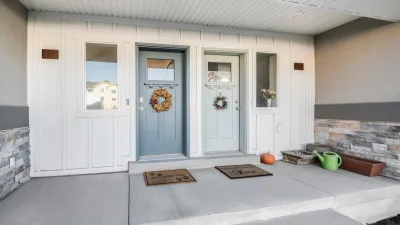As states move to boost housing production near transit, opposition from neighborhood groups frustrates efforts to build new developments.

Despite state-level efforts to encourage transit-oriented development, reports Jared Brey, TOD projects often meet with resistance at the local level, often from single-family neighborhoods that fear the purported negative impacts of increased density. Brey describes some successful and failed initiatives from around the country.
Despite California's extreme housing shortage, state efforts to mandate transit-oriented density have failed to produce significant results. However, a Los Angeles program that incentivizes transit-oriented affordable housing has become popular with developers seeking new construction permits. Meanwhile, in Atlanta, one recent proposal to eliminate parking requirements and allow denser housing development and multifamily housing near transit was rejected by a city council committee due to resident concerns.
Because transit-oriented development can result in higher housing costs and displacement, as evidenced in a report from the city of Chicago that evaluated the results of the city's 2013 TOD ordinance, that city has published an "equitable transit-oriented policy plan" meant to address this issue and ensure equitable access to the benefits of transit-oriented development.
While there is no empirical evidence showing negative economic impacts on communities or home values surrounding TOD, hostility remains strong. Housing advocates say that dispelling myths about multifamily housing and density can help reduce local opposition and help communities imagine a more affordable, more walkable future.
FULL STORY: The Difficult Push to Build More Housing Near Transit

Alabama: Trump Terminates Settlements for Black Communities Harmed By Raw Sewage
Trump deemed the landmark civil rights agreement “illegal DEI and environmental justice policy.”

Study: Maui’s Plan to Convert Vacation Rentals to Long-Term Housing Could Cause Nearly $1 Billion Economic Loss
The plan would reduce visitor accommodation by 25% resulting in 1,900 jobs lost.

Planetizen Federal Action Tracker
A weekly monitor of how Trump’s orders and actions are impacting planners and planning in America.

Wind Energy on the Rise Despite Federal Policy Reversal
The Trump administration is revoking federal support for renewable energy, but demand for new projects continues unabated.

Passengers Flock to Caltrain After Electrification
The new electric trains are running faster and more reliably, leading to strong ridership growth on the Bay Area rail system.

Texas Churches Rally Behind ‘Yes in God’s Back Yard’ Legislation
Religious leaders want the state to reduce zoning regulations to streamline leasing church-owned land to housing developers.
Urban Design for Planners 1: Software Tools
This six-course series explores essential urban design concepts using open source software and equips planners with the tools they need to participate fully in the urban design process.
Planning for Universal Design
Learn the tools for implementing Universal Design in planning regulations.
Caltrans
Smith Gee Studio
Institute for Housing and Urban Development Studies (IHS)
City of Grandview
Harvard GSD Executive Education
Toledo-Lucas County Plan Commissions
Salt Lake City
NYU Wagner Graduate School of Public Service





























